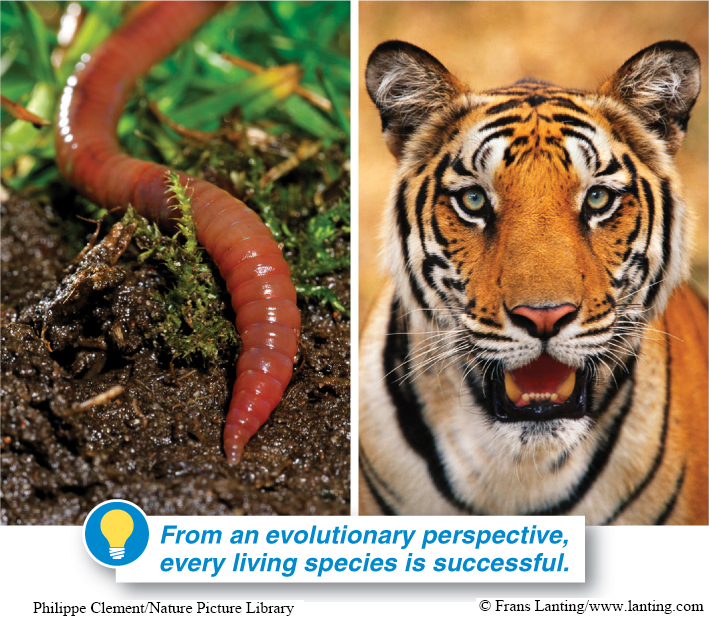11.0.1 11.2: There are no “higher” or “lower” species.
Humans often reveal their biases when speaking of other organisms. There are two possible states for a species. It can be extant, meaning that it currently exists. Or it can be extinct. From an evolutionary perspective, references to extant species as “lower” or “primitive” does not make sense. Rather, these labels usually reflect nothing more than how similar a species is to humans. Evolution can lead to greater adaptation between an organism and its environment, but it does not necessarily lead to greater complexity or to some other feature that can be identified as “higher” or more advanced. The fact that a species exists means it can do the things all organisms must do: find food, escape predators, and reproduce (FIGURE 11-2).

Darwin wrote a note to himself in the margin of a book he was reading that proposed a theory of cosmic and biological evolution: “Never use the word higher or lower.” It was an important insight, but one that can be difficult to adhere to—
Throughout his writings, for the many species he described, Darwin emphasized the process of adaptation and the relationship between populations of organisms and the environments in which they lived. One species was never better or worse than another. Rather, each species was differentiated from the others, with specializations that adapted individuals of that species to the particular niche in which they lived. Different environments posed different challenges. All extant species, as evidenced by their existence and persistence, are able to overcome those challenges.
Our tour through the animal kingdom begins with animals having a simple body plan, such as sponges, jellyfishes, and worms. It continues through the mollusks and arthropods—
448
“I have been studying the traits and dispositions of the lower animals (so-
— MARK TWAIN, in The Lowest Animal (written ~1897, first published 1962)
Although each extant species represents some measure of evolutionary success, certain adaptations have led to the rapid and extensive diversification of particular groups of species. We investigate nine of the phyla (there are approximately 36 animal phyla in all) with the most species (shown in Figure 11-3) and the evolutionary innovations that contributed to their success. These groups represent only a quarter of all animal phyla, but they account for about 99% of the animal species on earth today.
TAKE-HOME MESSAGE 11.2
From an evolutionary perspective, it is inappropriate to view any species as “higher” or “lower.” Certain adaptations have led to the rapid and extensive diversification of particular groups of species. Of the approximately 36 animal phyla, 9 phyla account for more than 99% of all described animal species.
Why did Darwin argue that the terms “higher” and “lower” should not be used to describe animals or other organisms?